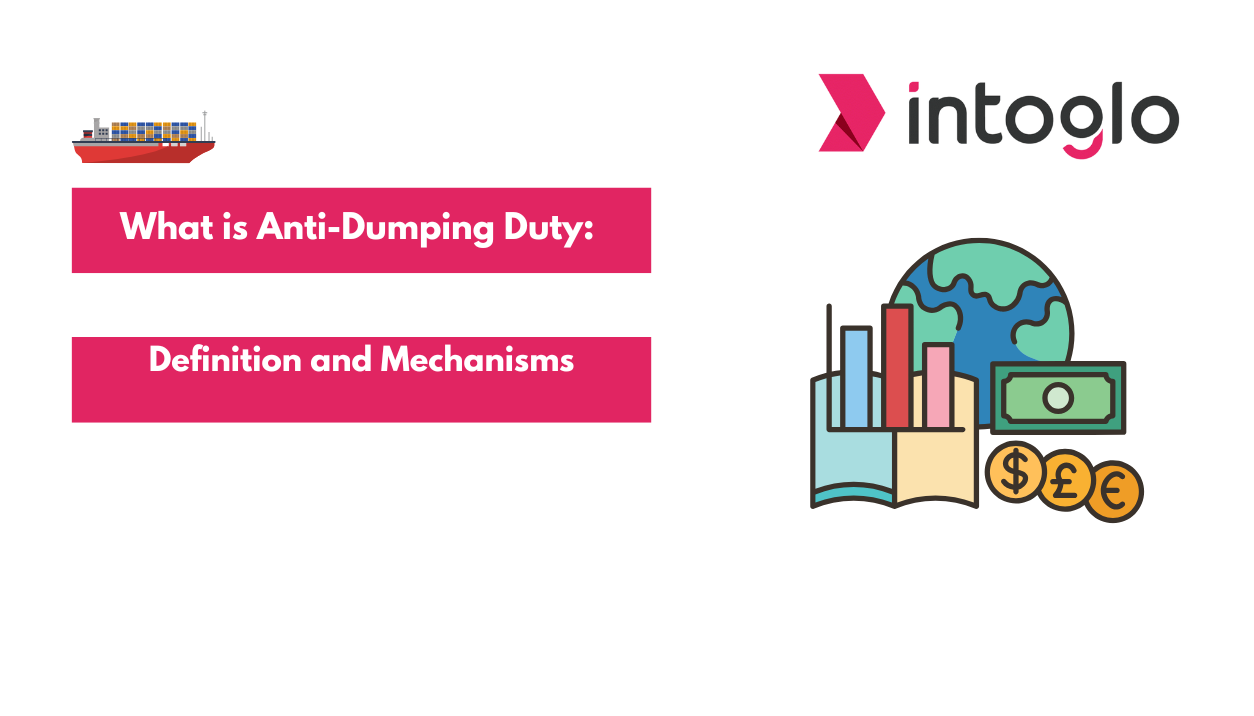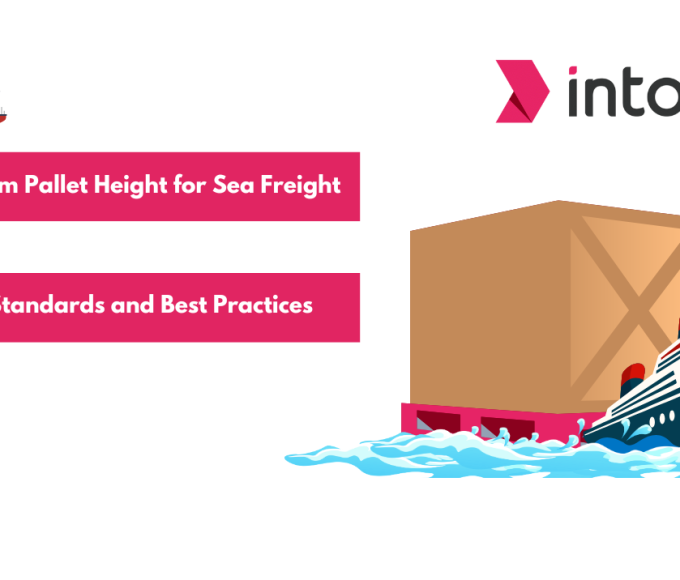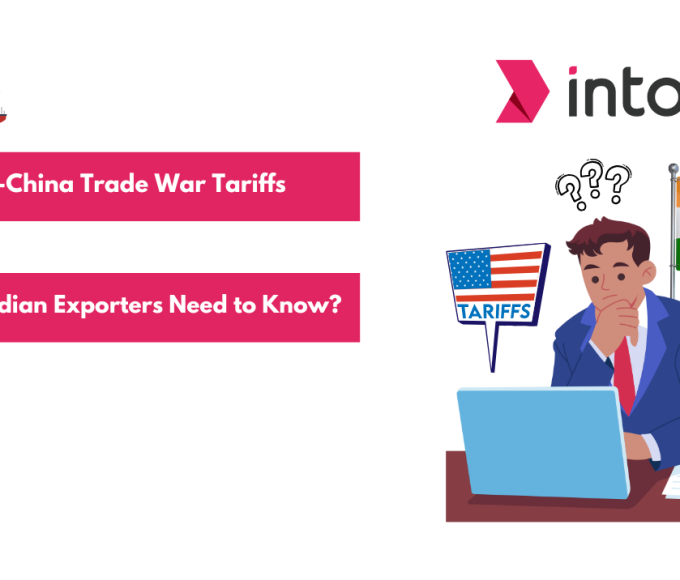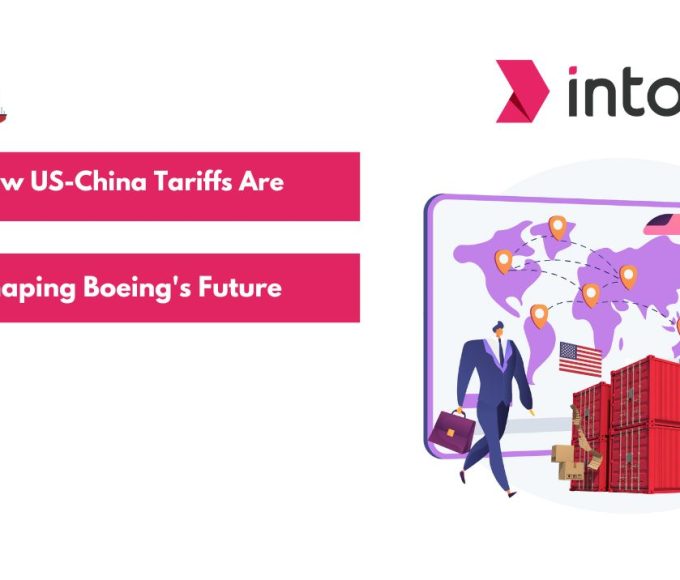Anti-dumping duty is an important measure governments use to protect local businesses from unfair competition. Foreign companies selling goods in your country at prices lower than their domestic market value can negatively impact local industries. In such cases, anti-dumping duties are imposed on these imported goods to ensure fair competition.
The duty safeguards against market distortion caused by dumping, helping maintain a healthy and competitive economy. Additionally, it protects jobs, preserves the local industry, and encourages fair trade practices on a global scale.
This article will explain everything you need to know about anti-dumping duties. We’ll cover how the duty is calculated, the procedure for imposing it, and how it works to protect your economy.
Let’s get started.
TL;DR
- Anti-dumping duty is a tariff imposed on imported goods priced below fair market value to protect domestic industries.
- It is typically applied when goods are sold at unfairly low prices, causing harm to the local market.
- Anti-dumping duties help maintain fair competition by discouraging predatory pricing from foreign companies.
- The WTO regulates anti-dumping measures to ensure they are justified and not used for protectionism.
- Businesses should be aware of anti-dumping regulations to avoid additional tariffs and penalties on imports.
How Does Anti-Dumping Duty Work?
Anti-dumping duty works by imposing a tax on imported goods that are being sold at unfairly low prices in the domestic market. The process begins when a government receives a complaint from a local industry claiming that foreign products are sold at prices below their normal value, often called “dumping.” Here’s how it works in a few simple steps:
- Investigation: Once a complaint is made, the government or relevant authorities launch an investigation to determine if dumping is happening. They compare the price at which the product is sold in the foreign market with the price in the exporting country’s domestic market. If the product is sold at a significantly lower price in your country, it is considered dumping.
- Determining Injury: The authorities also assess if the dumped products are causing harm to local businesses, such as loss of market share, decline in prices, or job losses. If it’s proven that dumping is harming the domestic industry, anti-dumping duties are imposed.
- Calculating the Duty: The anti-dumping duty is calculated to bridge the gap between the export price and the fair market price, typically the price in the exporting country or a “constructed” price based on production costs. The duty amount is intended to eliminate the dumped product’s price advantage.
- Imposition: Once the investigation is complete, the government imposes an anti-dumping duty, which can vary depending on the product and the level of dumping found. The duty is added to the price of the imported goods, making them more expensive and in line with domestic prices.
- Review: Anti-dumping duties are not permanent. They are usually reviewed periodically to ensure they remain necessary and appropriate based on market conditions.
Concerned about anti-dumping duties on your imports?
Reach out for easy imports!Role of the World Trade Organization (WTO)
The World Trade Organization (WTO) plays a crucial role in regulating and overseeing the use of anti-dumping measures globally. While the WTO doesn’t impose anti-dumping duties, it sets the rules and frameworks that member countries must follow when applying these duties. Here’s how the WTO is involved:
- Establishing Guidelines: The WTO’s Anti-Dumping Agreement provides the legal foundation for applying anti-dumping measures. This agreement ensures that anti-dumping actions are fair, transparent, and non-discriminatory. It outlines the procedures for investigating dumping, determining injury, and imposing anti-dumping duties.
- Dispute Resolution: If a country believes that another member is unfairly applying anti-dumping measures, it can bring the case to the WTO’s Dispute Settlement Body. The WTO offers a structured process to resolve trade disputes, ensuring that measures are compliant with international trade rules. This helps maintain fairness in global trade.
- Monitoring Compliance: The WTO monitors the use of anti-dumping duties by its member countries to ensure that they comply with established rules. It keeps track of implemented measures and provides regular reports on anti-dumping practices worldwide.
- Encouraging Transparency: The WTO promotes transparency in anti-dumping investigations. It requires countries to notify the WTO when they impose anti-dumping duties, ensuring that these measures are not used as protectionist tools or for political reasons.
- Promoting Fair Trade: The WTO aims to create a fair and predictable international trade environment. Regulating anti-dumping measures ensures that countries apply them only when necessary. They are based on evidence and are consistent with international trade principles.
Need help navigating complex tariffs and anti-dumping rules?
Request a quote now!Calculating Anti-Dumping Duty
Calculating anti-dumping duty involves determining the difference between the price at which an imported product is sold in the domestic market and that product’s fair market price (or “normal value”). Here’s how the calculation is typically done:
Step 1: Determine the Normal Value
The normal value is usually the product’s price in the exporting country’s domestic market. If the product is not sold in the domestic market of the exporting country, the normal value can be determined using one of the following methods:
- Comparable Price: The price of similar goods in a third country.
- Cost of Production: If no comparable prices are available, the normal value can be calculated based on the cost of production (including profit margin) in the exporting country.
Step 2: Determine the Export Price
The export price refers to the price at which a product is sold in the destination country. This is the actual transaction price, excluding any adjustments like shipping costs, taxes, and discounts. If the goods are sold through a related party, the export price may need to be adjusted to reflect the fair market value.
Step 3: Calculate the Dumping Margin
The dumping margin is the difference between the normal value (or fair market price) and the export price. It’s calculated as follows:
Dumping Margin= Normal Value−Export Price
The difference is considered the dumping margin if the normal value is more than the export price.
Step 4: Calculate the Anti-Dumping Duty
Once the dumping margin is determined, the anti-dumping duty is calculated. The duty amount is typically equal to the dumping margin but may be subject to a cap or other adjustments as per national laws or international agreements. The calculation is as follows:
Anti-Dumping Duty=Dumping Margin
In some cases, the duty may be calculated as a percentage of the product’s export price or based on the per-unit price of the imported goods.
Example
Let’s say:
- The normal value of a product (price in the exporting country) is $100.
- The export price of the product in the importing country is $80.
- The dumping margin would be $100 (normal value) – $80 (export price) = $20.
Therefore, the anti-dumping duty would be $20 per unit or an appropriate percentage based on the product’s price.
Looking to avoid anti-dumping issues in your shipments?
Get in touch with Intoglo!General Agreement on Tariffs and Trade (GATT) 1994
The GATT 1994 sets out principles and rules for international trade, including the treatment of imported goods. Here are the key principles of GATT 1994 related to imported goods:
1. Most-Favored-Nation (MFN) Treatment
Under the MFN principle, a country must treat all its trading partners equally regarding tariffs and other trade restrictions. If a country grants a trade advantage to one member (such as a lower tariff rate), it must extend the same advantage to all WTO members. This principle ensures non-discriminatory treatment of imports from different countries.
2. National Treatment
Once imported goods enter a country, they must be treated less favorably than domestically produced goods. Domestic and imported goods should be subject to the same laws, regulations, and taxes. This principle aims to prevent discrimination against imported goods after crossing the border, ensuring fair competition in the domestic market.
3. Tariff Binding
GATT allows member countries to set tariffs on imported goods, but once these tariffs are agreed upon, they are “bound.” This means countries cannot increase these tariffs beyond the agreed level without compensating the affected country. The binding of tariffs provides predictability and stability in international trade.
4. Transparency
Countries are required to provide clear and transparent information regarding their trade policies, regulations, and tariff schedules. This helps trading partners understand the rules governing imports and ensures that trade barriers are not hidden or arbitrary.
5. Non-Discrimination
GATT emphasizes that trade measures should not be discriminatory. This principle supports both MFN and national treatment, ensuring that imported goods are not unfairly treated compared to domestic goods. It prohibits countries from setting up trade barriers or restrictions that unjustifiably favor domestic industries.
Need expert advice on managing anti-dumping duties?
Contact for customs support!Impact of Anti-Dumping Duties on Import Costs
Anti-dumping duties can significantly affect the costs of imported goods, and businesses must be prepared to manage these impacts. Here are the key points to consider:
- Increased Product Costs: Anti-dumping duties raise the overall cost of imported goods, as the importer must pay additional tariffs, making products more expensive.
- Higher Shipping Costs: The added duties may result in higher logistics costs, as importers may need to adjust their pricing to account for these extra expenses.
- Impact on Pricing Strategy: Businesses may need to increase prices for consumers, which could affect competitiveness in the market, especially if competitors aren’t facing the same duties.
- Customs and Clearance Delays: Anti-dumping investigations and the imposition of tariffs can lead to longer customs clearance times, potentially delaying shipments and disrupting the supply chain.
- Uncertainty in Trade: The imposition of anti-dumping duties can create uncertainty in trade, particularly for companies that rely on stable pricing and supply chains.
How Intoglo Can Help You Manage Anti-Dumping Duty Challenges
Intoglo simplifies the complexities of managing anti-dumping duties with efficient, cost-effective logistics solutions. Here’s how we help:
- Direct Shipping Solutions: We work directly with shipping lines, truckers, and customs brokers, eliminating unnecessary delays and extra charges often caused by intermediaries.
- Instant Rates: Get clear, upfront pricing for full container loads on the India-to-USA trade lane, allowing you to plan and manage costs effectively in the face of anti-dumping duties.
- End-to-End Shipment Visibility: With Glotrack, our tracking system, you can monitor your shipments from start to finish, ensuring smooth delivery even when dealing with additional duties.
- Customs Compliance: Our in-house compliance team ensures all shipments are pre-screened for customs clearance, avoiding costly delays and complications associated with anti-dumping duties.
- Global Team Support: Our teams operating in India and the USA provide seamless support across time zones, resolving queries quickly and efficiently.
At Intoglo, we ensure your goods move smoothly and efficiently despite the challenges of anti-dumping duties. Let us handle the logistics while you focus on growing your business. Contact us today to get started.
Examples of Anti-Dumping Cases
Before 1980, anti-dumping cases were infrequent and often rejected by the Treasury Department. However, after the transfer of the anti-dumping authority to the Commerce Department in 1980, there has been a notable rise in the number of anti-dumping investigations.
Below are two examples of Anti-dumping cases in the US:
Example 1: Washing Machines from South Korea and Mexico (2013–2019)
In 2013, Whirlpool Corporation filed a petition alleging that washing machines imported from South Korea and Mexico were sold at prices below fair market value, constituting dumping. The U.S. International Trade Commission ruled in favor of Whirlpool, leading to the imposition of anti-dumping duties on these imports. This case highlighted the complexities of calculating dumping margins and using methodologies like “zeroing.” It also underscored the role of the World Trade Organization in resolving disputes related to anti-dumping measures.
Example 2: Solar Cells from Southeast Asia (2024)
In 2024, the U.S. Department of Commerce imposed preliminary anti-dumping duties on solar cells imported from Vietnam, Cambodia, Thailand, and Malaysia. This action addressed concerns that Chinese manufacturers were circumventing U.S. tariffs by routing products through these countries. The duties are expected to increase costs for U.S. solar projects, potentially impacting the growth of renewable energy initiatives.
These cases illustrate the U.S. government’s use of anti-dumping measures to protect domestic industries from unfair trade practices while highlighting the complexities and controversies that can arise in international trade disputes.
Conclusion
Anti-dumping duties are essential for protecting local industries but can create challenges for importers. The added costs, delays, and complexities of customs compliance can disrupt your supply chain and affect your bottom line. However, with the right logistics partner like Intoglo, you can easily navigate these challenges. We provide transparent pricing, efficient customs clearance, and real-time shipment tracking to ensure your goods move smoothly despite the added duties.
Contact Intoglo today for seamless, end-to-end logistics solutions and make your cross-border shipments hassle-free. Let us handle the complexities while you focus on your business growth.
FAQs
- What is anti-dumping duty?
Anti-dumping duty is a tariff imposed on imports sold below fair market value to protect domestic industries from unfair competition.
- How is anti-dumping duty determined?
The duty is determined based on the price difference between the imported goods and their normal value in the exporting country.
- When is anti-dumping duty applied?
Anti-dumping duty is applied when imported goods are found to be sold at unfairly low prices that harm domestic markets.
- What industries are affected by anti-dumping duties?
Industries that face unfairly low-priced imports, such as steel, textiles, and agricultural products, are most commonly affected.









Leave a comment